Though beans for breakfast may sound odd to some cultures, but if you spent in Lebanon, Egypt or the Middle East anytime then you know “foul medames” and sometimes spelled “ful”, is a daily ritual served typically for breakfast and brunch. Foul aka fava bean is a grain that dates back to ancient time, it has been part of the Middle Eastern diet since the 4th century; the origin of foul medames is said to be trailed to the Pharaonic Egypt.
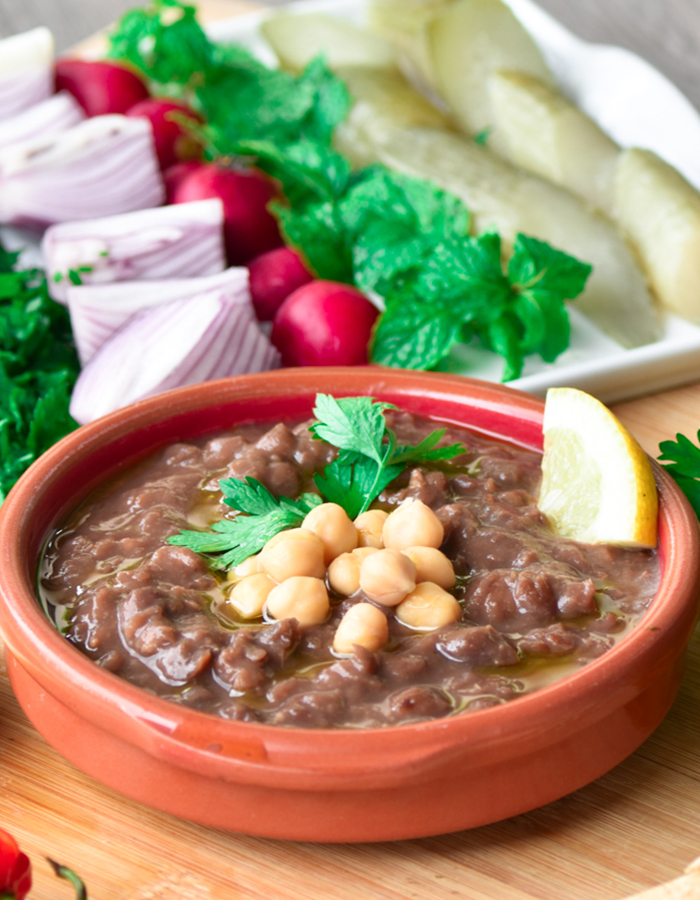
Foul medames is beloved for many reasons, it is tasty, frugal, filling, nutritious and proven to be very beneficial to gut health! It is naturally vegan and loaded with protein, fiber, iron and magnesium. Serve it also for lunch or dinner if you trying to cut back on meat consumption.
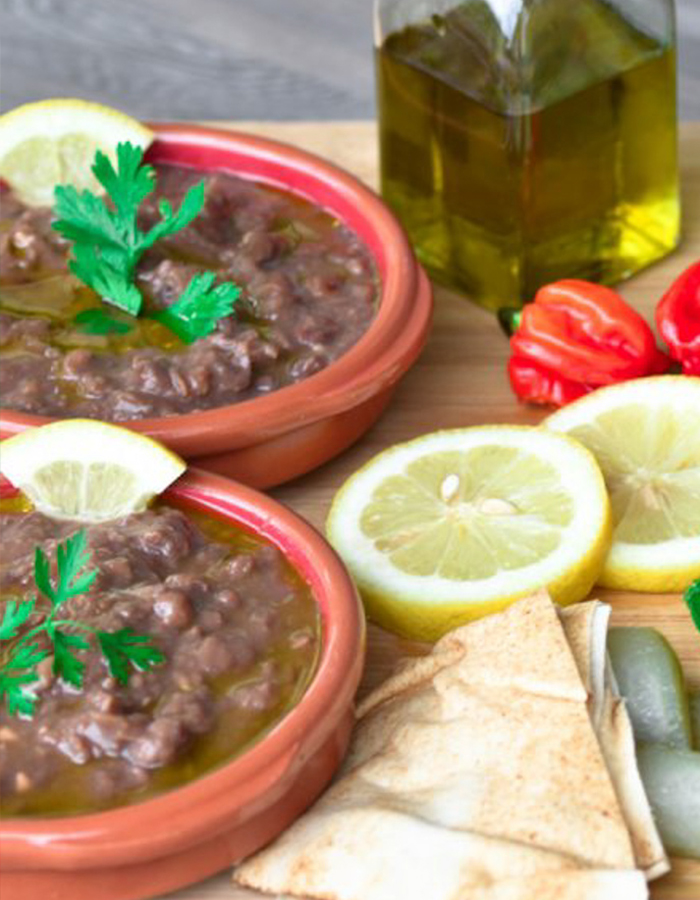
The star component in foul medamas is the dried fava beans that are soaked overnight with water, and cooked slow and low for a few hours until melt-in-your-mouth-tender. But now a days most folks have turned to canned fava beans to save time. Stewed fava beans are probably a common canned item in Lebanon and the Middle East that can be found everywhere. Just open the can, warm the content, mash a bit with a potato masher and season with salt, cumin powder and garlic. The taste is good, but I am a big fan of cooking foul with dried fava beans, then there are tons of reasons to skip the canned and make your foul medames from scratch. I would say when dried fava beans are properly cooked, they would beat the canned variety in terms of texture and flavor, take my words for it!
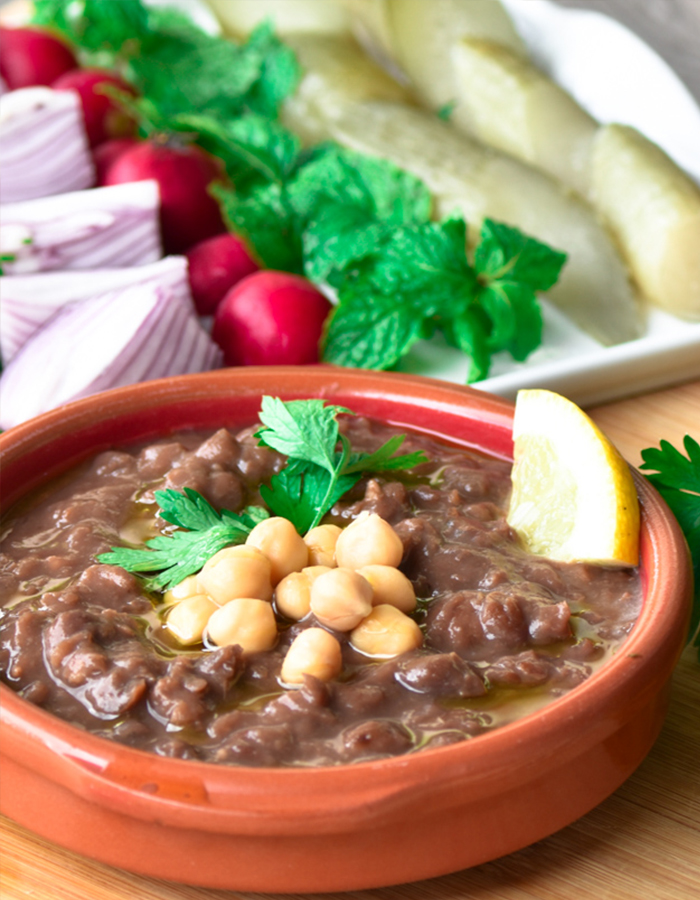
When I visit Lebanon I often stop by “Baroud”, a little eatery in, Tyre, South of Lebanon, located in the very heart of old souks where you will find customers sitting around crabbed tables hefted around breakfast and lunchtime. What makes the place so special is the legendary foul medames accompanied with fresh veggies, pickles, warm bread and hot cup of tea. It is one of those exceptional places that I think makes the best foul in the world.
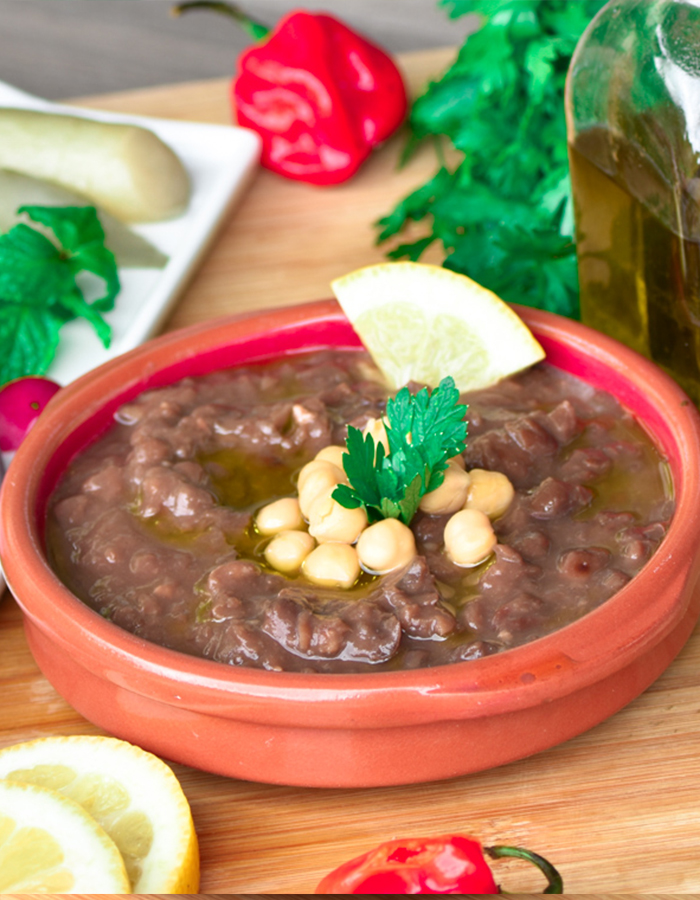
Growing up, foul seemed to make up most of our Sunday mornings. I could still smell the aroma of foul wafting through the air emanating from the kitchen, and the fun part starts when foul waits for us on the table with a spread of diced fresh tomatoes, chopped parsley, mint leaves, sliced onions, pickles, and warm Lebanese or pita bread that you scoop up foul with and mop it with veggies and olive oil – a feast of colors and textures and a memorable experience that celebrates the pleasures of food.
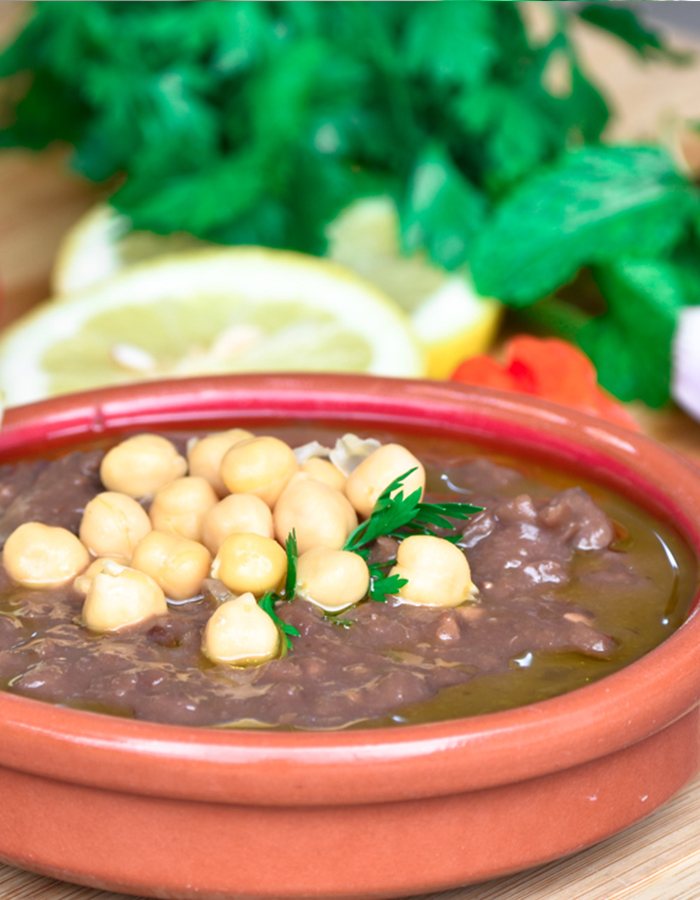
The recipe may vary from country to country and here is our family take for foul medames, it is fairly easy to make, but the key to this dish is the slow cooking where it is mashed and seasoned with salt, garlic, lemon and chilies that add a terrific flavor.
What type of fava beans to use?
As you know there are different types of fava beans, the ones used to make foul relatively look like the pinto beans with a firmer texture and different flavor, preferably use mini fava beans for best results.
How much water should I use to soak the beans, and what is the recommended soaking time?
To make the dried fava beans more digestable, they should be soaked in water for some hours. A rule of thumb, every 1 cup of dried fava beans needs to be soaked in 3 cups of water and baking soda. Soak for 15 hours and preferably for 20 hours since long soaking softens and rehydrates the beans. But if you plan to soak them for more than 20 hours, then you should keep the bowl, in the fridge. When you want to cook the beans, discard the soaking water and cook in fresh water.
Do I have to sprinkle the beans with baking soda while soaking?
There is no harm in skipping baking soda, but the thing is that fava beans have a tough skin around them, even with long cooking they can be difficult to soften and you will never be able to have the restaurant-style foul medames unless you sprinkle the beans with baking soda while soaking. It will soften their skin and make them cook more quickly.
How much time is needed to cook the fava beans?
Foul/ Ful needs about 2 hours of slow and low cooking, and sometimes it takes longer if your beans are old, you can’t be sure how old they are, so you need to keep testing and stirring every 30 minutes until the skin is considerably no more tough. As the foul cooks the broth will thicken a bit and release a starchy mix. The end result should be that of a thick soup. If the beans are drying out, add more boiling water to the desired consistency.
Make a big batch in advance!
Sometimes I cook a big batch of foul and use it throughout the whole week to make breakfast or even dinner faster, it lasts for 1 week in the fridge. I sometimes portion and store in the freezer. When the beans are cooked, foul medames can be ready in no time, if the foul becomes solid upon refrigerating, that is totally normal since the beans absorb the broth, just add a little of water upon reheating so that the beans have a bit of space to spread out. Heat it, season with salt, and cumin powder, add cruched garlic and lemon juice to your taste preference and drizzle with olive oil. It is perfect on days when you want to get some food fast on your table, quickly whip up a bowl on weeknights!
Use top quality olive oil
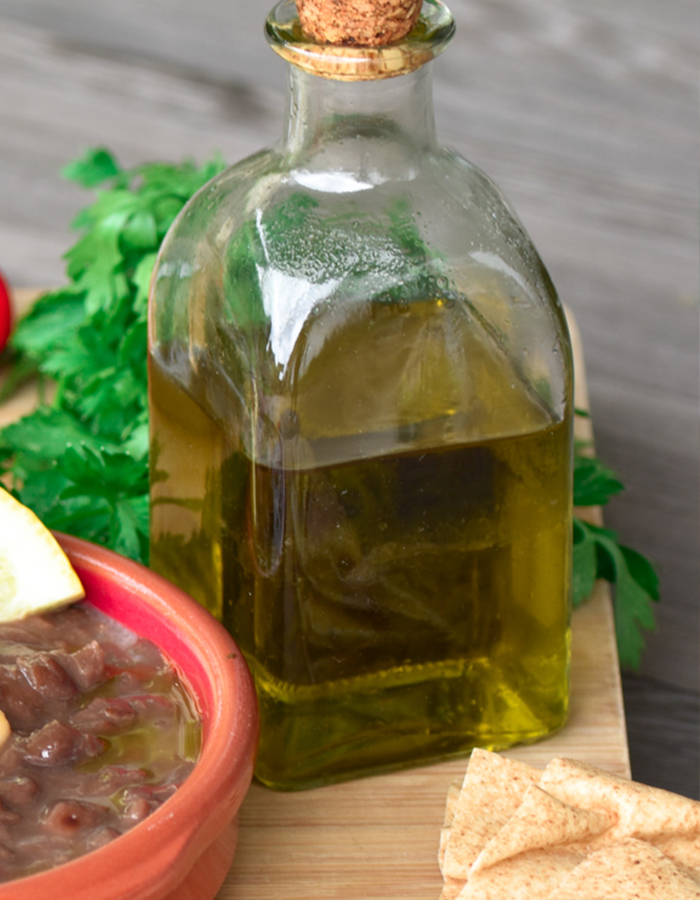
Not all olive oils are equal; use the best exrtra- virgin olive oil you can find because it will highlight and balance the flavor of foul medames. I am blessed every year to receive a decent gallon of extra-virgin olive oil from my mother-in-law in south of Lebanon, who happens to grow her olive grove where she takes them after picking to a local olive press. It is heaven and makes anything taste better!
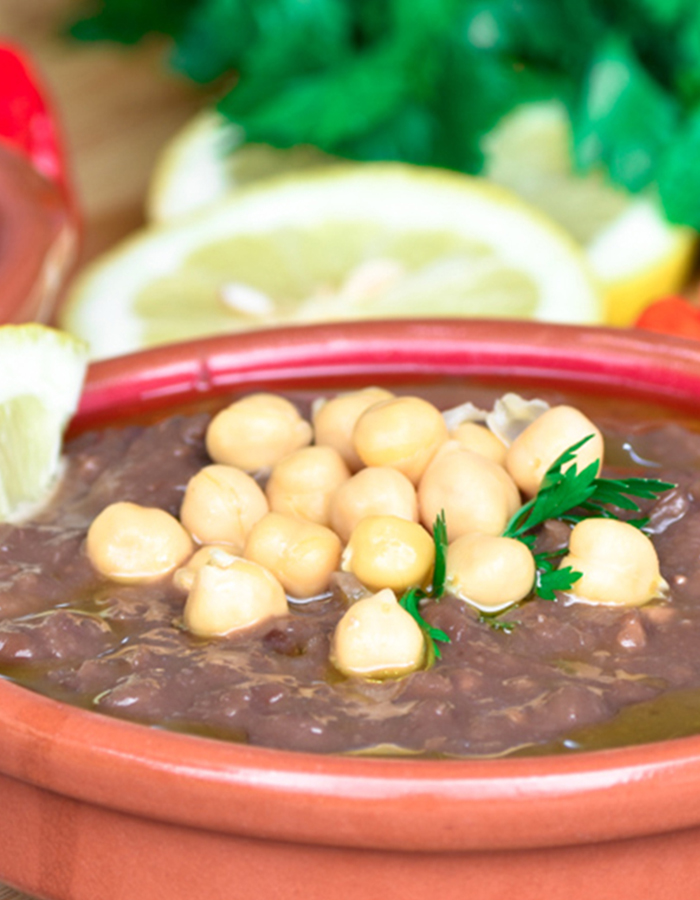
With or without chickpeas
If you like cooked chickpeas go right ahead! There is nothing wrong about adding chickpeas to foul medames, they work beautifully together. You will find some variations among families where chickpeas are involved while others do not include it; I personally support the idea. My husband doesn’t like chickpeas in foul, but when I am cooking for myself, I do add them since they add a depth of flavor. Just like dried fava beans, dried chickpeas need to be soaked overnight with a pinch of baking soda, then rinsed and simmered for about 2-3 hours until tender. Roughly mash and pile some on top of the foul. Skip this if you are not a chickpea fan!
More Lebanese breakfast
- Kaak alasreya/ Kaak/ Lebanese Street Bread
- Zalabia
- Manakeesh /manakish /manaeesh
- Lebanese Sweet Kaak
- Meshtah
- Labneh
- Shanklish
- Labneh Balls
- Jibneh baladi (baladieh)
- Lebanese bread
- Bread Knafeh
- Lebanese Fried Eggs with Garlic and Sumac
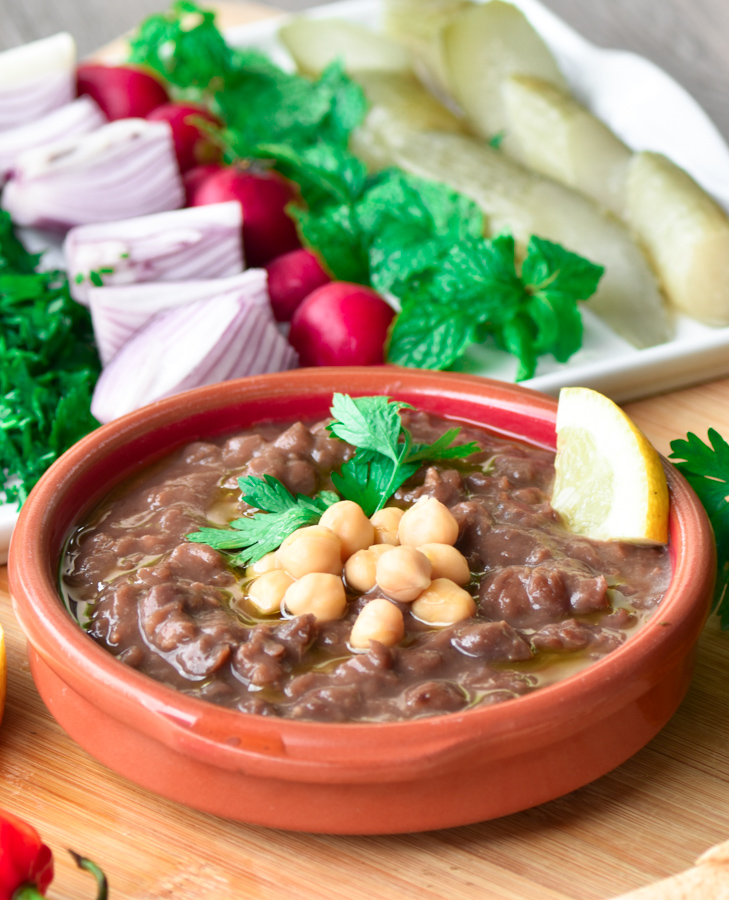
Foul Medames, Ful
Description
Ingredients
- 2 cups dried fava beans in their skins
- 5 cups water
- ¼ cup freshly squeezed lemon juice
- ½ teaspoon cumin powder
- 8 garlic cloves
- ½ teaspoon baking soda
- Extra-virgin olive oil for drizzling before serving
- Cayenne optional but recommended for a more hot and zingy flavor
- Serve it with a spread of diced tomatoes mint sprigs, sliced onions, pickles and radishes
Instructions
- As you know there are different types of fava beans, the ones used to make foul relatively look like the pinto beans with a firmer texture and different flavor, preferably use mini fava beans for best results.
- Soak the beans in 6 cups of water and baking soda for 15 hours and preferably for 20 hours, long soaking softens and rehydrates the skin of fava beans.
- Wash and drain the beans under cold running water. Place in a medium sized pot and cover with 5 cups of water and cook to boil on high heat, scooping and discarding the white scum as it appears.
- Cover the pot and put over low heat for 2 to 3 hours until the beans are no more tough and the liquid has lightly thickened. If the beans are drying out, add 1/2 cup of boiling water and cook until the fava beans are tender. The consistency should be that of a thick soup.
- Remove from heat, add salt, lemon juice, cumin powder and minced garlic.
- Roughly mash the fava beans with a mortar. Transfer to a large serving bowl. Drizzle some olive oil on top.
- Pile with diced tomatoes, sliced radishes, mint leaves and pickles, and serve with pita bread.
Notes
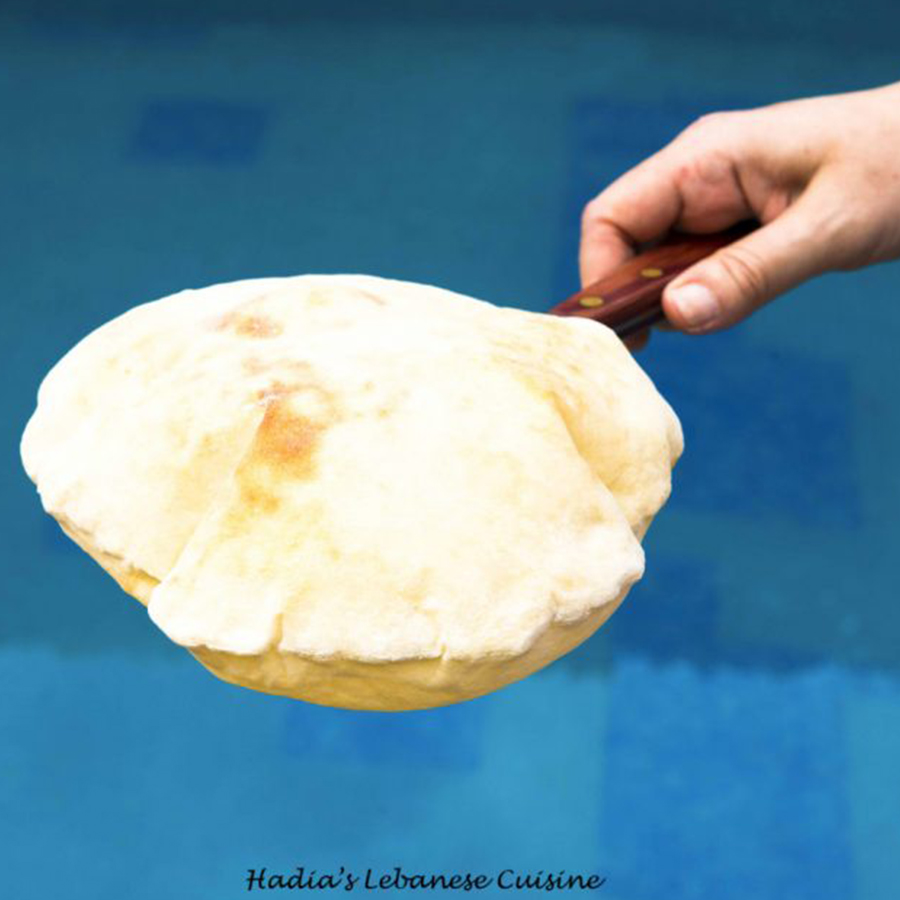 And here is a detailed recipe on how to make Lebanese pickles/ kabees. Foul medames and kabees are a must together.
And here is a detailed recipe on how to make Lebanese pickles/ kabees. Foul medames and kabees are a must together.
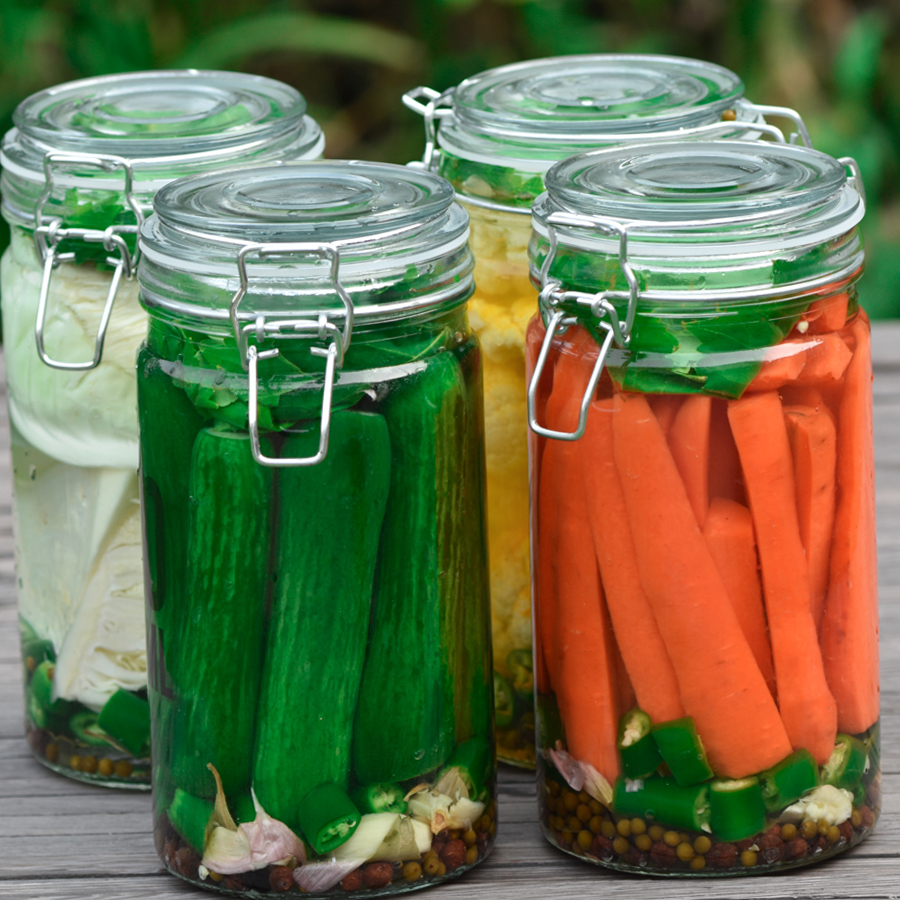


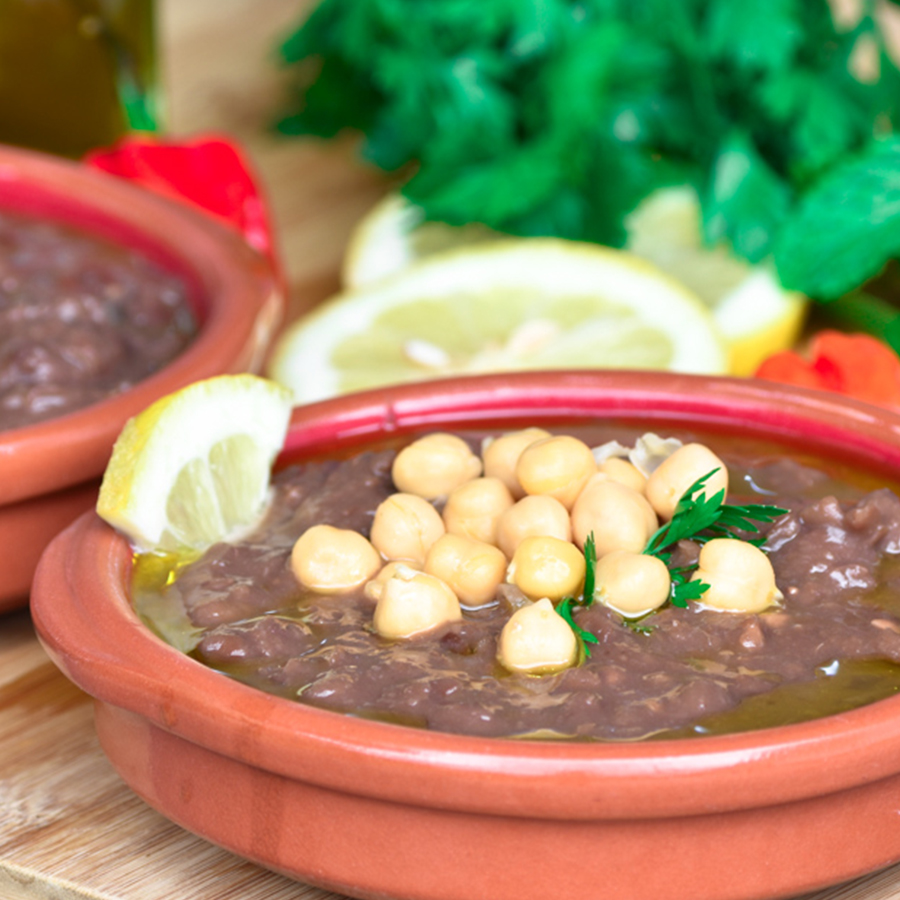
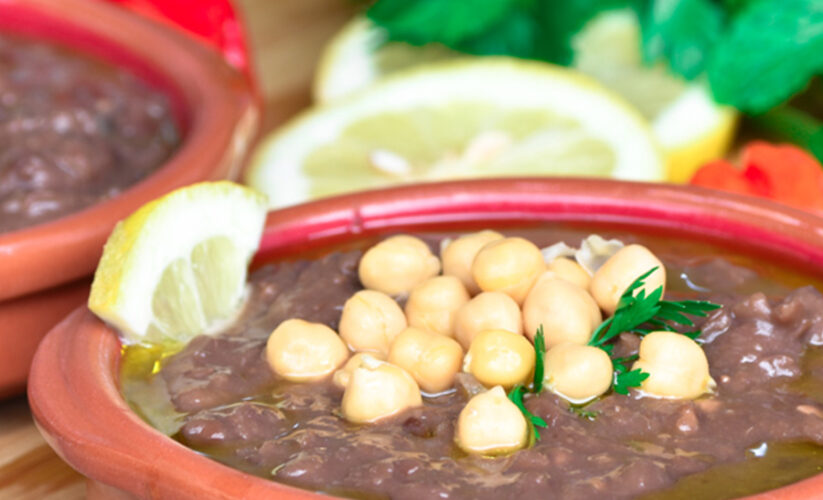

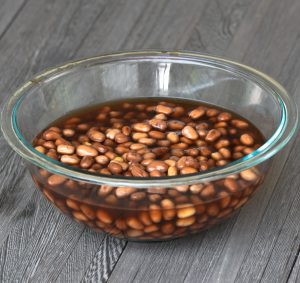
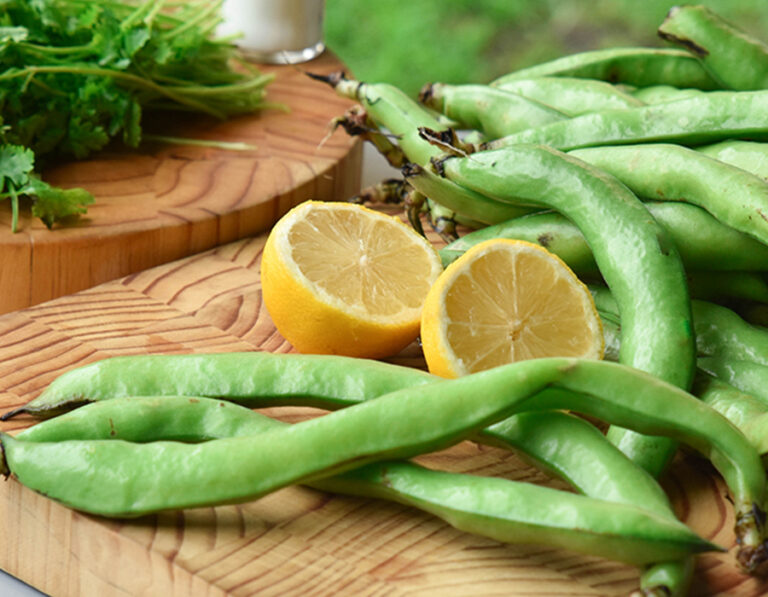
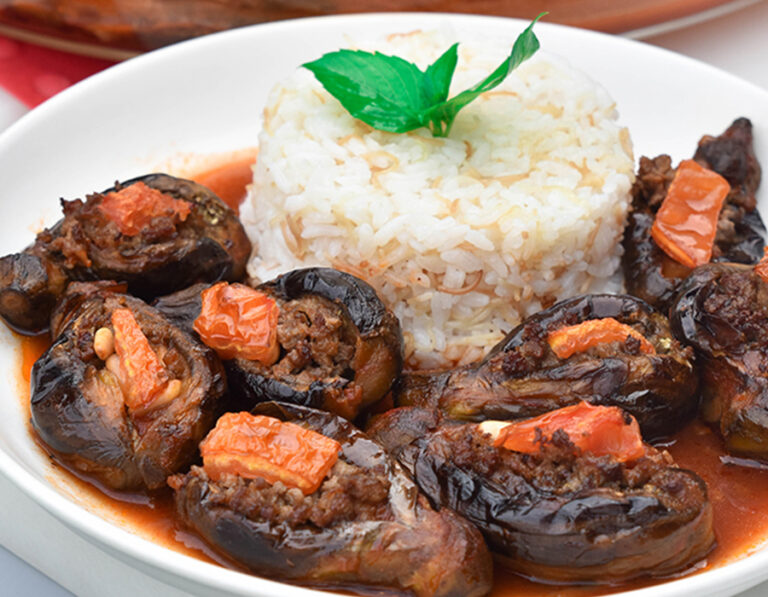



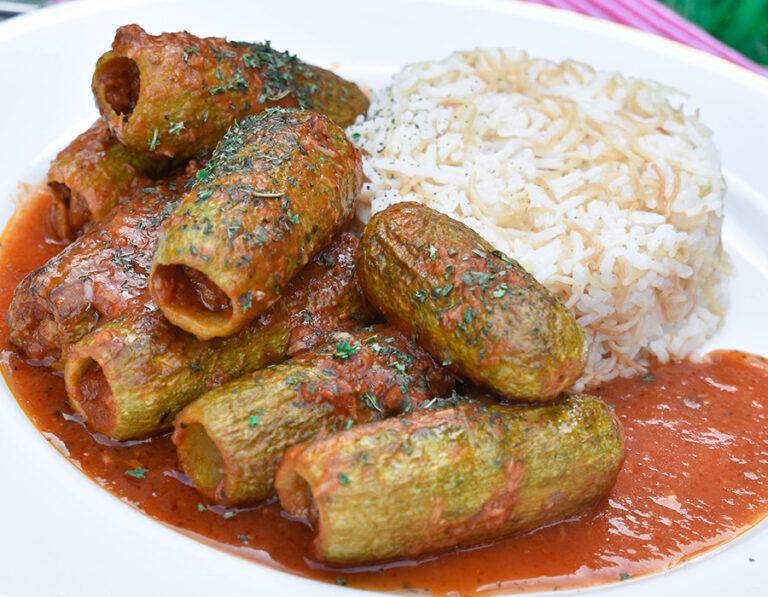

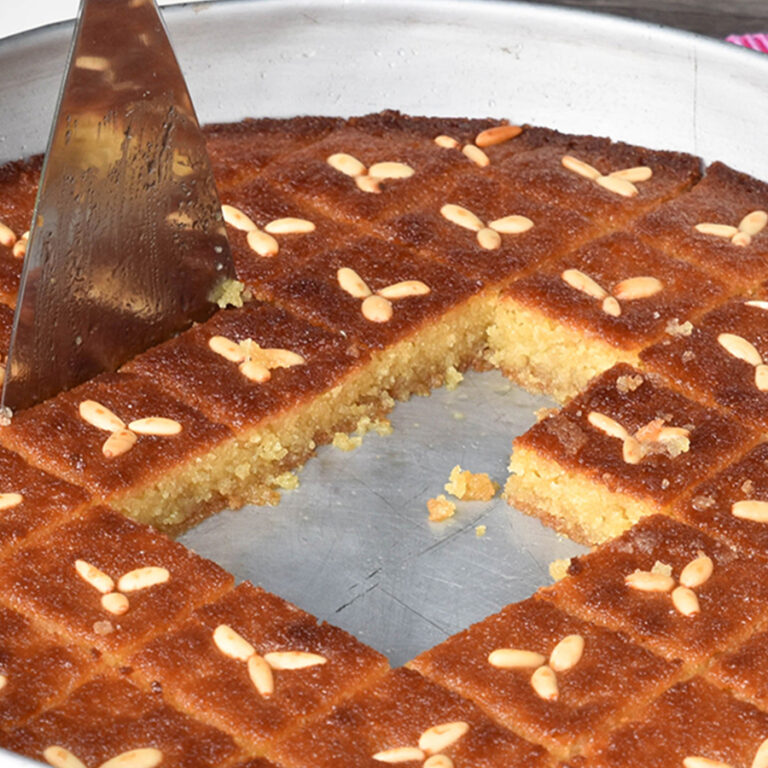
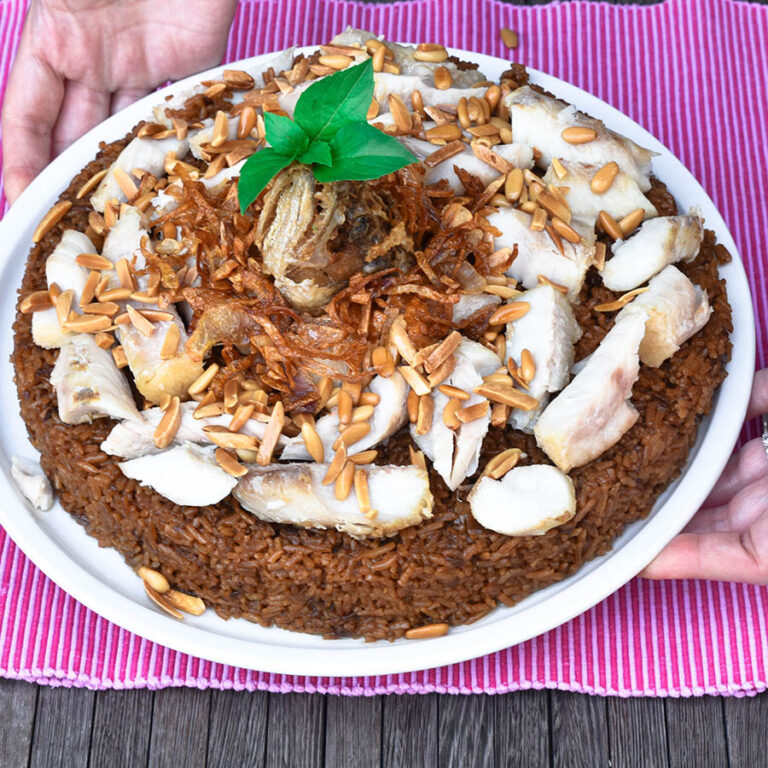



















2 Comments
I’m a huge fan of beans for breakfast and this recipe looks SO good! Fava beans are not available in my area … could I substitute pinto beans or another style of bean in this recipe?